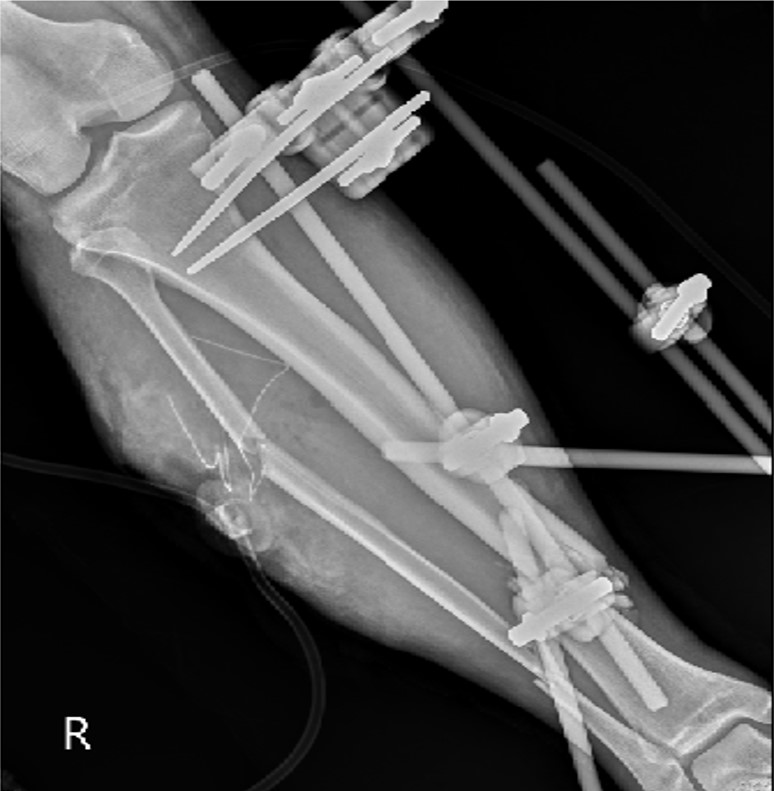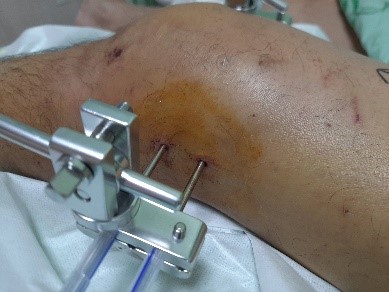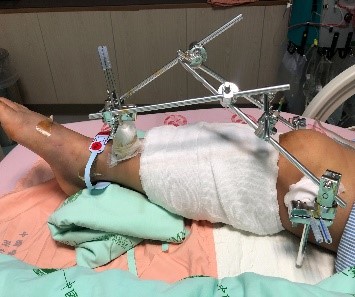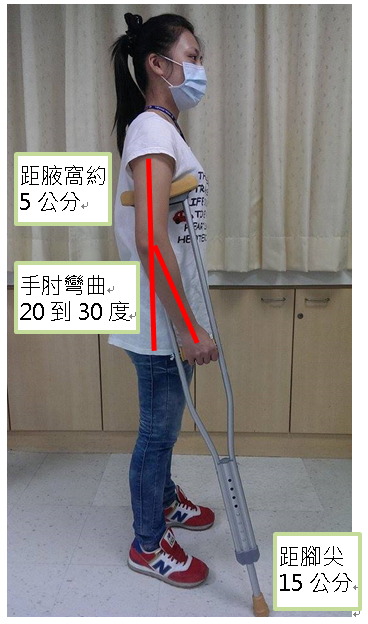An external fixation device is a special device made of metal or high strength nonmetallic material, with steel nails placed at the proximal and distal ends of the fracture. It connects and fixes the needle ends exposed outside the skin, and uses fixation, compression and stretching to treat fractures, correct deformities of bones and joints, and lengthen limbs, known as orthopedic external fixation techniques.
People suitable for external fixation devices
External fixation devices are suitable for the following fractures: second to fourth degree open fractures, fractures with severe burns, partially unstable closed fractures, multiple fractures, infectious fractures, fractures with soft tissue defects that require neurovascular sutures, flap transfer or transplantation and other reconstruction operations



Care for the nails
A dressing over the nail wound must be changed once a day, or twice a day if exudation increases. The steps are as follows:
- The items needed are:
One bottle of alcohol, one bag of sterile cotton swabs, several 2×2cm gauze bandages, one roll of breathable tape and several gauze strips.
- Wash your hands first.
- Remove the gauze from the external fixator.
- Remove the scab around the eye of the needle by using sterile cotton swabs dipped with alcohol.
- Stretch the skin around the needle eye apart, and with force exerted, disinfect it using sterile cotton swabs dipped with alcohol from the inside out in a rotating way.
- Wrap gauze strips around the eye of the needle several times, then fix with breathable tape.
Attention! Use only one cotton swab for each steel nail! If not used, discard the gauze or cotton swabs that have been taken out and do not put them back into the bag.
Daily care
- Eating: Eat high-fiber, high-calcium, high-vitamin C and high-protein diet. No smoking, alcohol, caffeinated and irritating food.
- Clothing: Wear comfortable and loose clothes.
- Housing: Avoid wetting wounds when washing your body.
- Moving: People with an external fixator for upper limbs can use a sling for support when walking or sitting up, while those with an external fixator for lower limbs can use a walking aid, wheelchair or crutches to support them when walking.
Use of crutches
- Length: When lying down, subtract 16 inches from the height or add 4~6 inches from the armpit to the sole of the foot.
- Standing posture: With your chest sticking out, about two transverse fingers of space between the top of the crutches and the armpits, stand with your weight on your hands instead of your armpits, and bend your elbows at 30 degrees, The tip of the crutches is placed 15 cm in front of the toes, and then 15 cm vertically outward.

- Walk with crutches (three-point gait):
- With the healthy limb supporting the weight, move the crutches forward and out together
- Bring the affected limb forward.
- With the crutches supporting the weight, bring the healthy limb forward.
Notes
- The wound should be observed and recorded daily. The affected limb should have no numbness, the extremities should be movable, and the fingers or toes should be warm and pink.
- Do not twist the screw of the fixator or push the steel needle left or right.
- Follow your doctor's advice and get out of bed early. There will be swelling and discoloration when you get out of bed. It will recover after rest. Please don't worry about it.
- You must come to the hospital if you have any of the following symptoms:
- A purulent discharge and odor in the wound
- Redness, swelling and pressure around the nail
- Nail slide
- Breakages in nails

